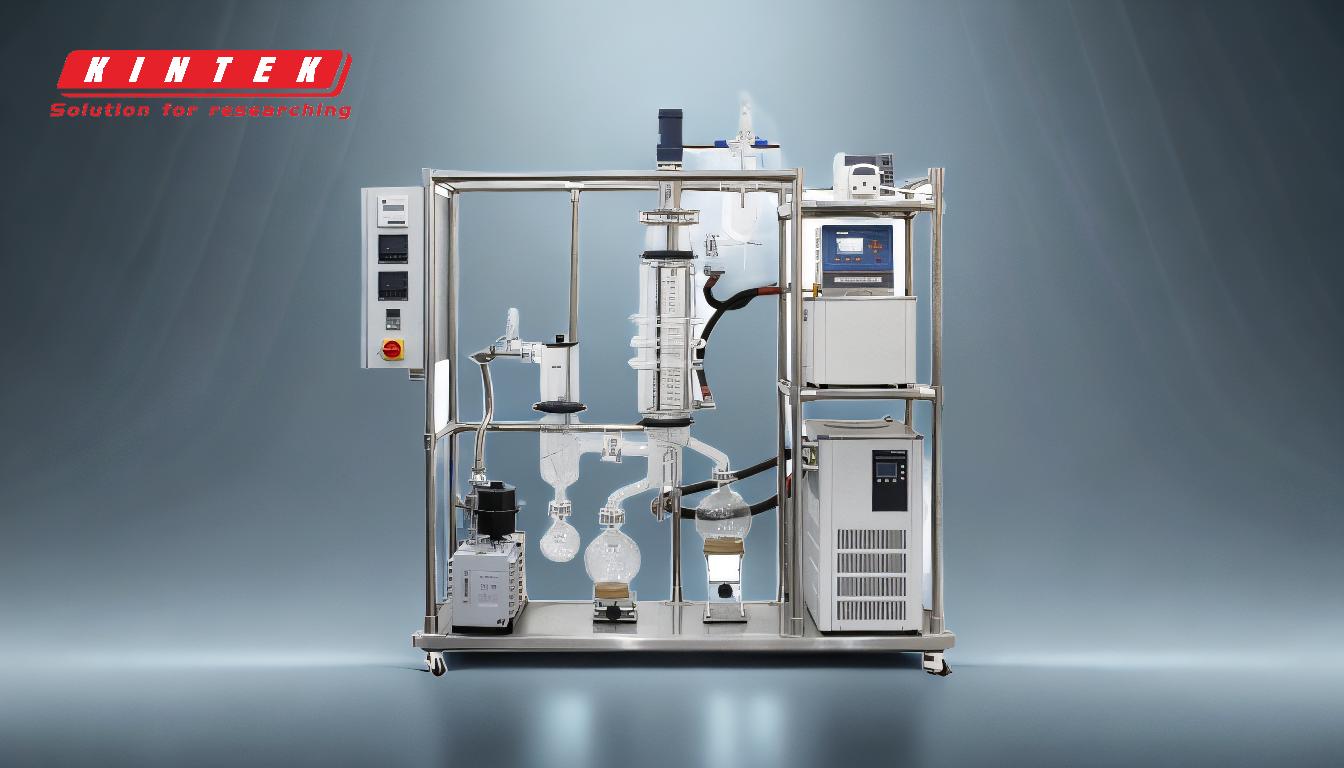Steam distillation and molecular distillation are two distinct separation techniques used in various industries, particularly for extracting and purifying substances like essential oils. Steam distillation involves heating a mixture with water or steam to vaporize volatile compounds, which are then condensed and collected. It is widely used for heat-sensitive materials and natural products. Molecular distillation, on the other hand, operates under high vacuum and low temperatures, relying on the molecular mean free path to separate substances without boiling. It is ideal for high molecular weight compounds and delicate materials that require precise separation. The key differences lie in their operating principles, temperature and pressure conditions, and suitability for specific applications.
Key Points Explained:

-
Operating Principles:
- Steam Distillation: This method uses steam or water to heat the mixture, causing volatile compounds to vaporize. The vapor is then condensed back into a liquid and collected. It relies on the difference in volatility between components.
- Molecular Distillation: This technique operates under high vacuum and low temperatures, allowing molecules to evaporate freely from the liquid surface without boiling. Separation is based on the molecular mean free path, where molecules travel different distances before condensing.
-
Temperature and Pressure Conditions:
- Steam Distillation: Operates at or near atmospheric pressure and requires higher temperatures to generate steam and vaporize the target compounds. This can be problematic for heat-sensitive materials.
- Molecular Distillation: Operates under high vacuum conditions, significantly reducing the boiling points of substances. This allows separation at much lower temperatures, minimizing thermal degradation.
-
Separation Efficiency:
- Steam Distillation: Effective for separating volatile compounds from non-volatile ones but less efficient for substances with very close boiling points.
- Molecular Distillation: Provides a higher degree of separation, even for compounds with similar boiling points or high molecular weights, due to the reliance on molecular mean free path.
-
Applications:
- Steam Distillation: Commonly used in the extraction of essential oils, fragrances, and other natural products. It is suitable for heat-sensitive materials that can withstand moderate temperatures.
- Molecular Distillation: Ideal for purifying and concentrating high molecular weight compounds, such as vitamins, fatty acids, and polymers. It is also used for heat-sensitive materials that require precise separation.
-
Energy Consumption:
- Steam Distillation: Requires significant energy to generate steam and maintain the distillation process at higher temperatures.
- Molecular Distillation: More energy-efficient due to its low-temperature operation and reduced internal resistance in the system.
-
Equipment and Process Complexity:
- Steam Distillation: Involves relatively simple equipment, such as a boiler, condenser, and collection vessel. The process is straightforward but may require careful control of steam flow and temperature.
- Molecular Distillation: Requires specialized equipment, including a high-vacuum system, evaporator, and condenser with a short path between them. The process is more complex but offers greater precision in separation.
-
Suitability for Specific Materials:
- Steam Distillation: Best suited for materials that are stable at moderate temperatures and can be effectively separated based on volatility.
- Molecular Distillation: Particularly effective for materials that are prone to oxidation, decomposition, or polymerization at higher temperatures, as well as for high molecular weight compounds.
In summary, steam distillation and molecular distillation serve different purposes and are chosen based on the specific requirements of the materials being processed. Steam distillation is a simpler, more traditional method suitable for volatile compounds, while molecular distillation offers advanced separation capabilities for delicate and high molecular weight substances under controlled conditions.
Summary Table:
| Aspect | Steam Distillation | Molecular Distillation |
|---|---|---|
| Operating Principle | Uses steam or water to vaporize volatile compounds, relying on volatility differences. | Operates under high vacuum, separating molecules based on molecular mean free path. |
| Temperature | Higher temperatures, near atmospheric pressure. | Low temperatures due to high vacuum, minimizing thermal degradation. |
| Separation Efficiency | Effective for volatile compounds but less efficient for close boiling points. | High separation efficiency, even for compounds with similar boiling points or high weights. |
| Applications | Extracts essential oils, fragrances, and natural products. | Purifies high molecular weight compounds like vitamins, fatty acids, and polymers. |
| Energy Consumption | High energy required for steam generation. | More energy-efficient due to low-temperature operation. |
| Equipment Complexity | Simple setup with boiler, condenser, and collection vessel. | Requires specialized high-vacuum systems and short-path evaporators. |
| Suitability | Best for heat-sensitive materials stable at moderate temperatures. | Ideal for delicate materials prone to oxidation or decomposition at higher temperatures. |
Need help choosing the right distillation method for your application? Contact our experts today for personalized advice!











